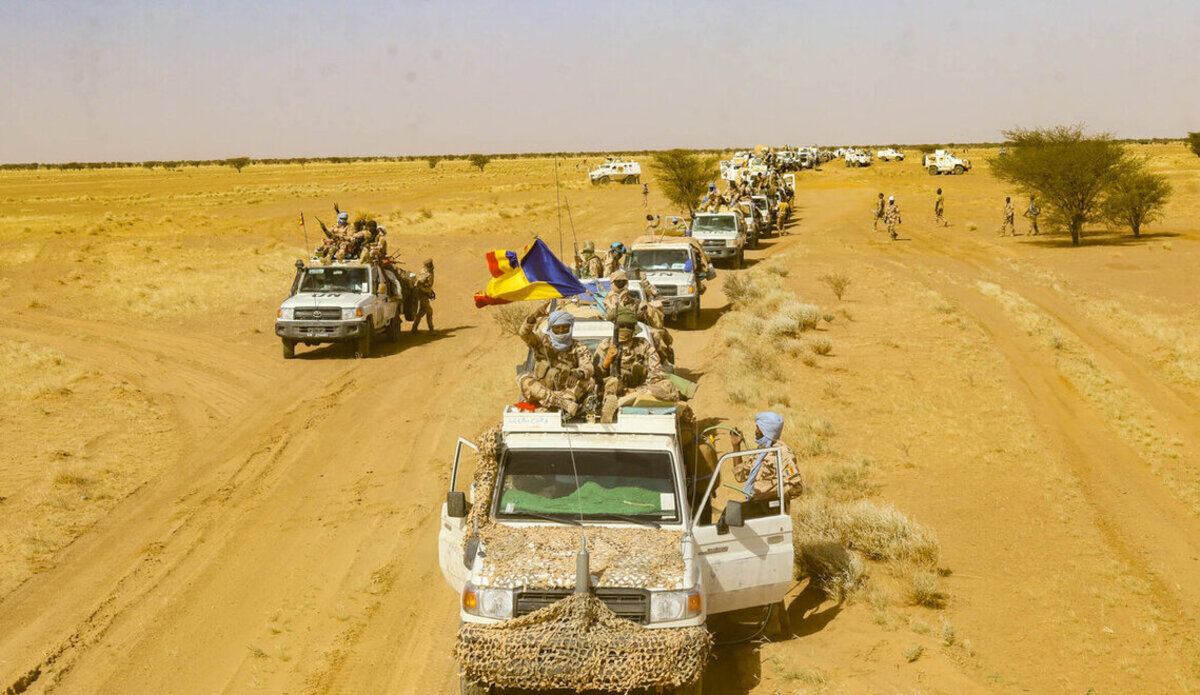In this series, UN Peacekeeping shows the impact of Action for Peacekeeping, which guides peace operations across 11 active missions.
On June 30, 2023, the United Nations Security Council ended the mandate of the Peacekeeping Mission in Mali, MINUSMA, at the request of the Malian authorities. The mission is implementing its departure in difficult security conditions but is committed to completing its withdrawal by December 31, 2023, followed by the liquidation period, which will begin on January 1, 2024, as agreed in the Resolution of Security Council 2690.
The article below is available in full here.
On October 31, 2023, MINUSMA peacekeepers embarked on a final mission, from Kidal to Gao, in northern Mali.
That day, the last MINUSMA convoy in the region set off from its camp in Kidal, for an odyssey of just over 350 kilometers towards Gao. A journey that would have taken around 5 hours for a vehicle traveling at 60 km/h. But it took 8 days for this convoy of 143 vehicles to arrive at destination. According to Major General Mamadou Gaye, MINUSMA Force Commander, “each kilometer traveled was a success, each improvised explosive device neutralized was a victory, each life preserved was a source of deep relief. We knew it was a high-risk trip, but we had a duty toward these peacekeepers who served with distinction and in extremely difficult conditions in northern Mali. They all had to return home safely.”
Last high-risk mission
The convoy was made up of 848 peacekeepers from Chad, Guinea, Egypt, Nepal, Cambodia and Bangladesh deprived of air cover that could have helped alleviate the omnipresent terrorist threat in these hostile areas. In addition, since the majority of vehicles were not armored, passengers were more exposed to constant risk. “We were not only soldiers, but also brothers and sisters on this dangerous road. The spirit of camaraderie allowed us to overcome adversity,” testified one of the Chadian peacekeepers in the convoy.
But why did MINUSMA embark on such a risky operation? The decision was justified by the rapid deterioration of the security conditions and the concomitant rise in tensions at the local level, putting the lives of Blue Helmets in greater danger every day, in a context marked by the very significant reduction in the Mission's capabilities. The operation to extract personnel from the Kidal Mission was made even more complicated by the lack of sufficient authorization to carry out the air rotations required to transport peacekeepers and sensitive equipment. In fact, nearly 400 of them should have been returned to Gao by plane but were forced to take the road.
Added to this was the blockage, in Gao, since the end of September, of logistical convoys which were to reach the Kidal region and repatriate heavy equipment belonging to countries contributing troops and police personnel as well as to the United Nations. In addition, the drastic reduction in food reserves and supply difficulties in Kidal added to the already strenuous situation.
“The destruction of the weapons and ammunition was a difficult decision, although in accordance with UN regulations, but it helped save lives by preventing them from falling into the wrong hands. Our mission was to protect, and we did it,” stressed a peacekeeper.
Blue Helmets determined despite mine threat
There were few days when the convoy did not encounter mines. The first explosion occurred on the very day of departure, when the convoy was only 25 kilometers southwest of Kidal. Due to its length, approximately 9 km, its size, as well as land mobility constraints (sandy tracks), the vehicles could not hope to travel at more than fifty kilometers per day.
“Each mine explosion was a stark reminder of the reality and volatility of our operating environment. We knew that the danger was omnipresent, but we continued,” testified Mahamat, a soldier in the Chadian contingent. In total, 6 attacks injured 37 peacekeepers.
Survival and success despite threats
When they arrived in Gao, the Blue Helmets were more than exhausted, but they carried within them the legitimate pride of having accomplished their mission with bravery in extremely difficult conditions.
UN peace operations are deployed on the basis of mandates from the United Nations Security Council. Their tasks differ from situation to situation, depending on the nature of the conflict and the specific challenges it presents. The consent of the parties, and especially the host country, is essential for establishing and continuing a peacekeeping operation.
The safety and security of peacekeepers is a key areas of the Action for the Peacekeeping agenda and its implementation strategy A4P+. Improvised Explosive Devices are increasingly used by armed groups, posing a growing threat to peacekeepers and civilians alike. The United Nations work to strengthen accountability for crimes committed against peacekeepers and hold perpetrators accountable.






